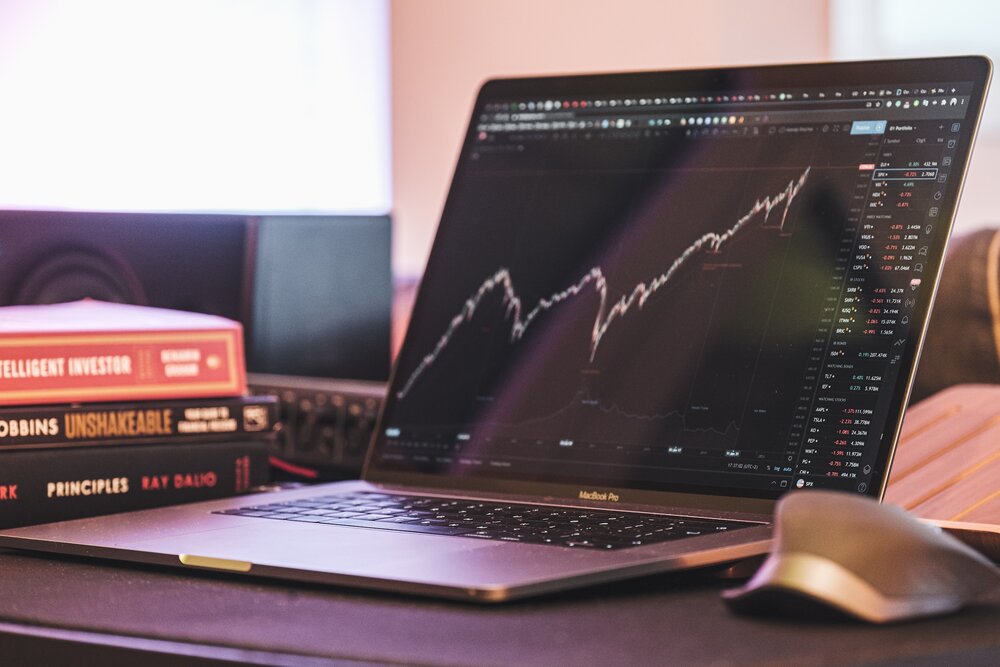
What is Momentum Trading?
Momentum trading is a trading strategy that aims to capitalize on the continuation of existing trends in the market. The momentum trader buys stocks that have been rising and sells those that have been falling, attempting to profit from the inertia of trends as they unfold.
The core principle is that price trends tend to persist and gain momentum over time. Stocks with upward momentum tend to continue rising, while stocks with downward momentum tend to keep falling. Momentum traders try to identify these trends early and ride the wave until it shows signs of reversal.
How Momentum Trading Works
Momentum traders use technical indicators like moving averages, the relative strength index (RSI) and stochastics to identify stocks with momentum. Generally, stocks trading above their 20-day and 50-day moving averages are considered uptrends, while those trading below them are downtrends.
An RSI above 70 suggests a stock is overbought and could reverse down soon. A stock with an RSI below 30 is oversold and could bounce back up. Momentum traders exit trades when the momentum appears exhausted and the stock could change direction.
Key aspects of momentum trading:
-
Identify stocks with strong momentum in a clear uptrend or downtrend.
-
Enter trades in the direction of the trend.
-
Use stop losses to limit the downside if the momentum fades.
-
Take quick profits as momentum starts slowing. Don't wait for a reversal.
-
Cut losses quickly if momentum stalls out or reverses. Don't hope it will resume.
-
Avoid fundamentally weak companies, even if they show price momentum.
Benefits of Momentum Trading
Some key benefits of momentum trading are:
-
Capitalizes on the persistence of existing trends.
-
Clear entry/exit rules based on momentum.
-
Doesn't rely on fundamental analysis of companies.
-
Quick profits as you ride momentum waves.
-
Defined stop losses limit downside.
-
Risk is lower if you cut losses quickly.
Risks of Momentum Trading
Some risks to keep in mind:
-
Momentum can reverse rapidly, leading to whipsaws.
-
Overreliance on momentum alone can be risky.
-
Momentum indicators can give false signals.
-
Trading costs from a high volume of trades can add up.
-
It's hard to succeed in choppy or range-bound markets.
Best Practices for Momentum Trading
Here are some tips for effectively trading momentum:
-
Use multiple indicators like moving averages, RSI, Bollinger bands to identify momentum.
-
Always use stop losses to limit potential losses.
-
Book profits quickly as momentum starts fading. Don't get greedy.
-
Cut losses short and don't average down on losing momentum stocks.
-
Trade with the overall market trend for higher probability trades.
-
Use larger position sizes for strongly trending stocks.
-
Avoid stocks making new highs on low volume or divergence on indicators.
Common Momentum Trading Strategies
Some popular momentum strategies are:
-
Trend Following - Trading in direction of strong uptrends/downtrends.
-
Breakouts - Trading breakouts above resistance or below support.
-
Reversals - Fading moves that appear overextended and ready to reverse.
-
Relative Strength - Buying strong stocks, shorting weak stocks.
-
Gap and Go - Trading of stocks gaping up or down on earnings/news.
Momentum vs Other Styles
Compared to value and growth investing styles, momentum trading is more active and fast-paced. Value and growth investors buy based on fundamentals and hold long-term. Momentum traders buy based on technicals and hold short-term.
Momentum trading is riskier than buying and holding but offers the ability to profit from identifying emerging trends early on. It requires close monitoring of the markets, discipline, and risk management.
Getting Started with Momentum Trading
To start momentum trading:
-
Educate yourself thoroughly on momentum concepts and indicators.
-
Open a brokerage account that allows active trading and has low commissions.
-
Use a paper trading account initially to test your strategy.
-
Start with high volume, liquid stocks and ETFs. Avoid penny and thinly traded stocks.
-
Keep position sizes small initially as you gain experience.
-
Develop a trading plan with entry/exit rules and stick to it.
-
Review your trades periodically to improve your skills.
The Bottom Line
Momentum trading aims to capitalize on the persistence of trends in stock prices. It can generate quick profits, but requires proper risk management using stop losses. With education, discipline and experience, momentum trading can be a profitable investment approach.
By utilizing our affiliate links below, you contribute to our support:
Amazon: Help Support Us When You Shop on Amazon.com
Mint Mobile: Try Mint Mobile For As Low As $15/Month
Robinhood: Earn Free Stocks When You Sign Up
Webull: Earn Free Stocks When You Sign Up
Skylum: Save 30% on Luminar Neo - Premium Photo Editing Software

Comments
Post a Comment